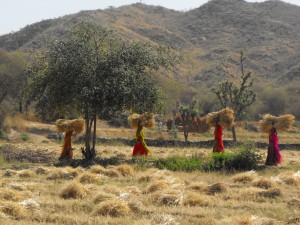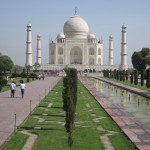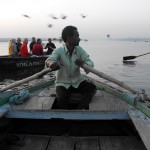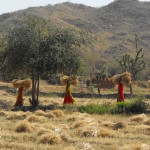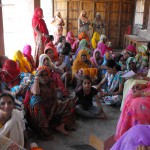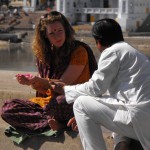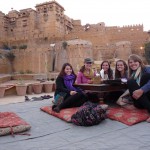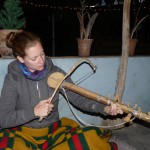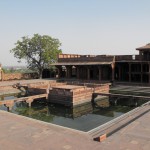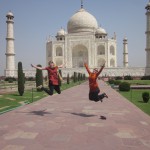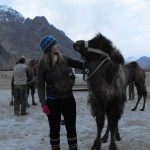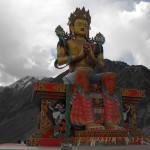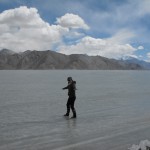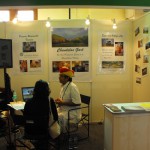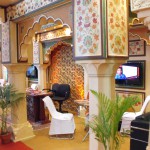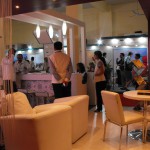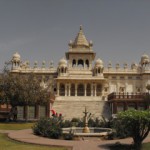Most good travel stories are about discovering the unexpected. The traveler goes abroad with an illusion, the illusion is shattered, but then she learns something new, and after assorted challenges and humiliations, she achieves a satisfying epiphany. Where do we switch from illusion to satisfaction?
I seem to wake up every morning by 6 am with recent dreams plaguing my already fragile physique with senses of the things I have left behind. When I wake, I still feel the hot, dusty air brushing my cheeks and taste the salty sweat falling to my lips. In the dark room it’s easy to still find the bright colored saris of Rajasthani women standing out on the brown, stark landscape, and the aimlessly wandering cows stopping traffic and eating trash. My dreams are filled with colors, heat, and sorrow.

I arrived in Houston on Saturday afternoon, and even though I had felt like it was time for me to leave India, I had not wanted to come home so soon. I feel like I blinked my eyes and 8 months has come and gone. Although some tears escaped after leaving Delhi on my way to London, the feeling of sadness came full force when I arrived in Houston and knew that my time in India truly was finished. It was an absolute surreal experience standing in line waiting to go through customs, because it all looked so foreign to me, although it is the country I belong to and call home. It was strange to find everyone speaking English and not staring at me. As I stood there with my backpack on and a family behind me speaking with more than a hint of a southern twang, I couldn’t help thinking “why did I come back?” Of course I know the answer to that, but I couldn’t help thinking about it. India had beyond doubt forced its way into my heart like sunshine that forces its way through even the slightest cracks of a dark room. I have inevitably and wonderfully come to call India my home, at least one of them.
I actually started tearing up for second… Give me minute.
Okay, I’m good. Well, as good as I will get right now. Being that I have come to stay with my mother for a little while, and she lives in a small Texas town of 300 people, it makes the transition of moving back to the U.S. a bit harder than it would be around friends in Nashville. I will be there soon though, so for now I am just trying to keep busy and relax before going back to Nashville and start working at the restaurant for a while until I find a permanent position elsewhere in the country or world. My first day in Texas, however, proved to have an unknown surprise that would send me into an anxiety-ridden morning. My mother asked me to attend church with her in her small town southern Baptist church that I have attended many times before. I acquiesced even though I was still quite tired from the jetlag, but I did not know what was in store for me.
As I walked into the church, it seemed normal enough, although still a bit surreal being back in the U.S. and all, but as soon as the service began I started to feel a heavy cloud push down on me. After spending a long time in a country with a completely different culture, not to mention a strange and still incomprehensible religion, home seems very different. I have visited many different countries, but India is not just a different country, it is a different world. So anyways, as I sat on the pew near the back of the church that would not comfortably fit 100 people, I looked around and had the worst case of culture shock I have had in my entire life. From all the trips I have taken, and the 20 plus countries I have been to, a small town church in central Texas made me want to laugh, cry, and breath out of a paper bag from unexpected anxiety. Looking around at the people of Industry, Texas, and surrounding areas, I realized what a dissimilar world to which I had returned.
This episode and came and went rather fast, because if there is one thing that I learned in India that will stay with me forever, it’s the ability to get over something and move on. Now that I have been home a few days longer, I have been getting more accustomed to being back, and being in a small town is easier than expected, because lets face it, I lived in a village for 8 months. However, it is very different here and everyday I am reminded by the fact that I have been gone for quite a long time. Not only do I still find myself trying to do things that seem normal in India, such as going to the right side of the car to drive, thinking I need an adapter for every wall plug, seeing cows fenced in, and speaking English to anyone and everyone; but I have found nostalgia around every corner of my new everyday life to remind me of India. Oh India.
After all, traveling is never all bad; even in the worst circumstances, you are able to learn something new. Whether you choose to repeat the time you have spent there depends on the specific experiences one encounters. Traveling only spurs the need to travel more, see more of world, and the cultures that may be different from your own. It is a blessing to be able to have these experiences and get to learn. Living in a different country, especially one so different from your own, is also a great experience and even though it can be hard sometimes, the hard times only make the time spent there more of an unforgettable experience.

